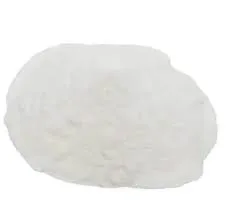
Nov . 28, 2024 01:25 Back to list
HPMC Pricing Trends and Insights for the Construction Industry
Understanding HPMC Price Trends Factors and Implications
Hydroxypropyl Methylcellulose (HPMC) is a versatile chemical compound widely used in various industries such as pharmaceuticals, food, construction, and personal care products. As demand for HPMC continues to grow, understanding its pricing dynamics becomes crucial for manufacturers and consumers alike. This article explores the factors influencing HPMC prices, current market trends, and their implications for businesses and consumers.
Factors Influencing HPMC Prices
1. Raw Material Costs The primary components in the production of HPMC are cellulose, propylene oxide, and methanol. Fluctuations in the prices of these raw materials directly affect HPMC prices. For instance, if the supply of cellulose is disrupted due to environmental regulations or natural disasters, the cost of HPMC is likely to increase.
2. Production Capacity The global production capacity of HPMC plays a significant role in its pricing. Manufacturers invest heavily in production facilities; thus, any expansion or reduction in capacity can lead to significant shifts in supply. If demand outpaces production capacity, prices may surge. Conversely, if there's an oversupply, prices may drop.
3. Market Demand The demand for HPMC is influenced by its application across various sectors. For example, the pharmaceutical industry requires high-quality HPMC as a binder and release agent in drug formulation. Similarly, in the construction sector, HPMC enhances workability and water retention in mortars and plasters. Industries experiencing growth will subsequently increase their demand for HPMC, possibly driving prices higher.
4. Technological Advancements Innovations in HPMC production methods can lead to cost reductions. For instance, more efficient production techniques can decrease the overall cost of manufacturing HPMC. If such advancements are adopted widely, it might result in lower prices for consumers.
5. Global Trade Policies Tariffs and trade agreements also impact HPMC prices. Countries importing HPMC may face varying tariffs that can increase the final price of the product. Furthermore, trade tensions between major economies can lead to disruptions in supply chains, affecting prices.
hpmc price

Current Market Trends
As of late 2023, the HPMC market has shown varied pricing trends depending on regional demands and economic conditions. In regions where the construction sector is booming, such as parts of Asia and the Middle East, HPMC prices have seen upward pressure due to increased demand for construction materials. Conversely, in areas where economic conditions are weak, demand has stabilized, leading to relatively stable prices.
In the pharmaceutical sector, the ongoing emphasis on drug development, particularly in the wake of the COVID-19 pandemic, has kept the demand for HPMC robust, which has led to price stability. However, any signs of recession could have ripple effects across sectors, pushing manufacturers to reevaluate their pricing strategies.
Implications for Businesses and Consumers
For manufacturers, understanding HPMC pricing trends is essential for strategic planning and budgeting. Businesses need to monitor the market closely to anticipate changes in costs. Effective supply chain management can help mitigate the impacts of price fluctuations.
Consumers, on the other hand, may experience variations in product prices based on HPMC-related costs. For instance, in the construction industry, the rising prices of HPMC could lead to higher costs for mortars and construction chemicals. It is crucial for consumers to be aware of these trends, as they can influence project budgets and timelines.
Conclusion
The pricing of Hydroxypropyl Methylcellulose is influenced by a complex interplay of factors ranging from raw material costs to global trade dynamics. As industries continue to evolve, keeping an eye on these trends will be essential for both businesses and consumers. With an understanding of the underlying factors at play, stakeholders can make informed decisions that align with market conditions, ensuring sustainability and profitability in the ever-changing landscape of HPMC pricing.
-
Versatile Hpmc Uses in Different Industries
NewsJun.19,2025
-
Redispersible Powder's Role in Enhancing Durability of Construction Products
NewsJun.19,2025
-
Hydroxyethyl Cellulose Applications Driving Green Industrial Processes
NewsJun.19,2025
-
Exploring Different Redispersible Polymer Powder
NewsJun.19,2025
-
Choosing the Right Mortar Bonding Agent
NewsJun.19,2025
-
Applications and Significance of China Hpmc in Modern Industries
NewsJun.19,2025







